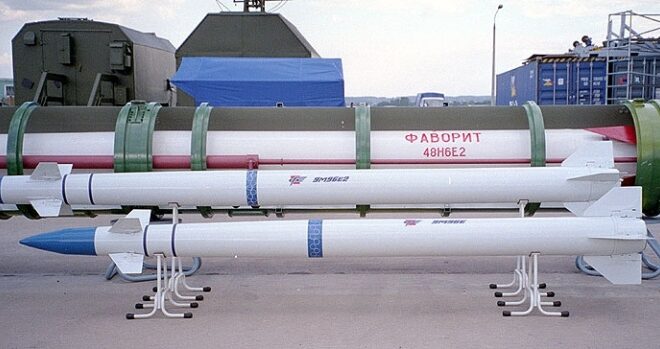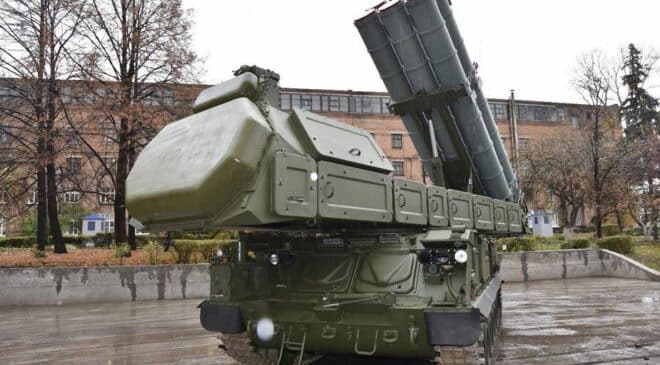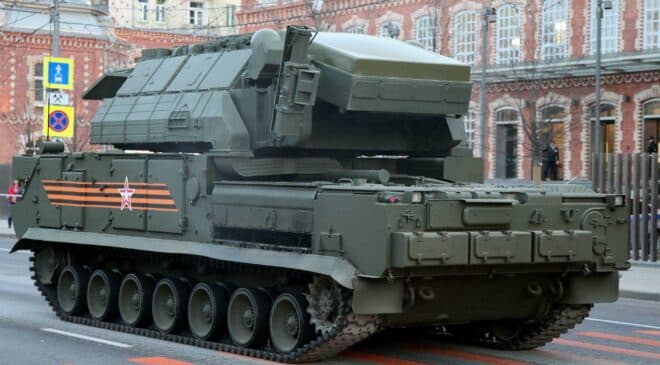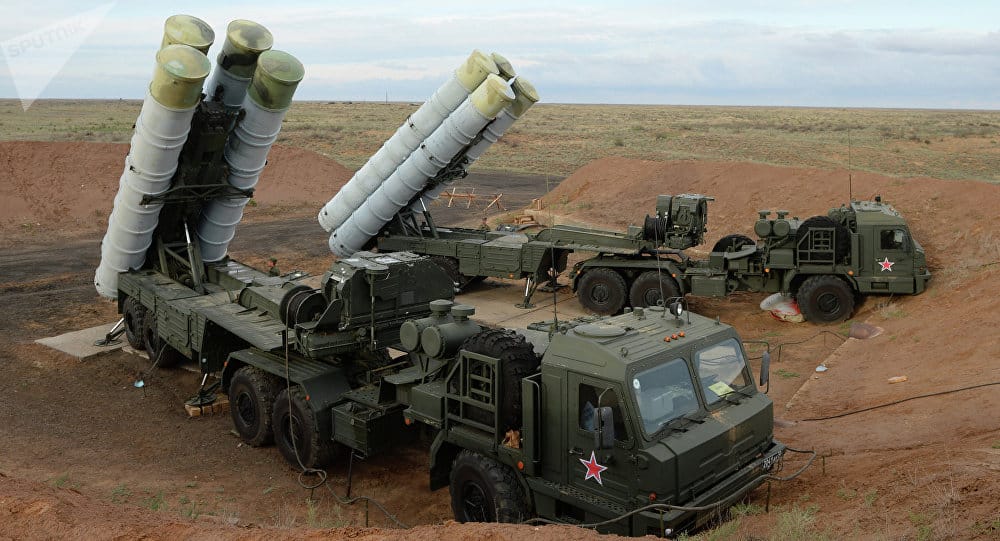A report dated March 4, 2019 from the FOI, the Swedish Military Intelligence agency, aims to provide a precise update on the various access denial systems implemented by Russian forces in the Baltic Sea.
This report covers many systems, such as the K-300 Bastion anti-ship system, and even the Iskander short-range ballistic missile. It is, however, his conclusions about the S-400 system that are the most interesting, and, to put it bluntly, the most questionable.
According to this report, the performance of the S-400 system currently deployed near the Baltic Sea, whether on the Kaliningrad Peninsula, or around Saint Petersburg, would be largely overvalued by the media, but also the Western military. The report bases its conclusions on several points:
- The 40N6E missile, which has an effective range of 400 km, is not yet in service, and the current S-400 batteries use the 48N6 missile, which indeed equips certain versions of the S-300, and whose maximum range does not exceed 250 km.
- The detection capabilities of the S-400 radars would only be a few tens of kilometers against maneuvering targets operating at low altitude.
- Russia has not demonstrated its mastery of cooperative engagement with Awacs-type aircraft, such as the IL-76 and the Beriev A-50 Mainstay.
The report concludes that the S-400 is primarily useful for engaging large targets, such as tankers and transport aircraft, at long range, and that it could be “relatively easily countered” by modern fighters and cruise missiles. .

Fundamentally, the points made in the report are correct. However, the conclusion that the authors draw from these limitations is, in several points, erroneous, and can lead to a misinterpretation of the reality of the threat.
Indeed, Russian doctrine is not, and never has been, to consider the S-400 as an absolute weapon meeting all engagement needs, notwithstanding the various types of missiles used by the system. -even.
Russian anti-aircraft defense is, in fact, based on several systems with complementary performances and operating at different distances, altitudes and against different targets:
- Long-range systems, such as the S-400 today, the S-300 yesterday and the S-500 tomorrow, provide interdiction at medium and high altitudes, as well as anti-ballistic protection in a wide perimeter, at scale of the army corps or theater of operation, as well as the protection of strategic sites or sites with high symbolic value, such as Moscow, Saint-Petersburg and other large Russian cities or regions potentially threatened, such as Crimea.
- Medium-range systems, such as the BUK system or the recent S-350, protect units on a division scale, from 10 to 120 km away.
- Short range systems, sometimes referred to as SHORAD for Short range Air Defense, such as the TOR-M1/2 system, protect units at brigade level as well as areas of high tactical value, such as logistics sites, posts communication and command. They are supplemented by anti-aircraft artillery and infantry anti-aircraft systems such as Igla missiles.
- Very short-range CIWS defense systems, such as Pantsir 1 and 2, have the function of protecting infrastructure against missiles, bombs, shells, drones and aircraft.
- Finally, combat aircraft themselves are divided into two categories. Interceptors like the MIG-31 directly complement the air defense system by opposing aircraft that manage to cross the multi-layered anti-aircraft defensive curtain. Superior air fighters, such as the Su-35s, the Su-30 and the Su-27, carry out combat patrol, power projection and interdiction missions.
It should be noted that tactical protection systems such as Sosna and Tunguska, as well as infantry anti-aircraft missiles or MANPADs, are not, for their part, integrated into the Russian multi-layer anti-aircraft defense bubble, and depend exclusively on units of maneuver who implement them.

It is therefore all of these systems, sharing their detection and engagement information through a common computer network, which constitutes the effectiveness of Russian anti-aircraft defense.
In this arrangement, the S-400's mission is to force assault and superiority aircraft to fly lower, so as not only to consume much more fuel, but also to put them at a good distance from medium-range systems. and short range, much less constrained by the effects of the terrain.
In addition, they force support aircraft, such as tankers and Awacs early air surveillance aircraft, to operate at a greater distance from the engagement zone, which in fact reduces operational effectiveness.
Furthermore, while there is nothing to indicate that Russia has made significant breakthroughs in terms of surface-air cooperative engagement, it has, however, mastered the interconnection of anti-aircraft defense systems for several years.
It is therefore able to deploy additional and complementary radars to existing systems, for example, low-frequency radars in order to detect and engage stealth aircraft, and share their information throughout the weapon system.
Therefore, even with missiles having "only a range limited to 250 km", which is still greater, by the way, than the 200 km of the latest Patriot missiles or the 120 km of the Aster 30, the largest part of the Baltic Sea would remain inaccessible to maritime patrol aircraft, Awacs or NATO air force combat aircraft, unless these S-400 batteries had to be eliminated first.

We understand that limiting ourselves to the analysis of the strengths and weaknesses of the S-400 to deduce the effectiveness of Russian access denial and anti-aircraft defense capabilities is a poor assessment, as well as 'a bias unfortunately common within Western agencies.
Indeed, by comparison in the West, the number of different systems integrated into anti-aircraft defense rarely exceeds the number of 2: fighter aviation on the one hand, and a long-range anti-aircraft system, such as the MAMBA or the Patriot on the other hand.
Furthermore, in Russian doctrine, which has many more artillery systems and multiple rocket launchers than Western forces, air superiority is not, in itself, a prerequisite for maneuver. He just needs to make sure the opponent doesn't have it either.
In the case of Western forces, on the contrary, this air superiority, which is therefore mainly based on fighter aviation, is essential, both to protect the land forces and their logistics, and to provide them with the surplus firepower which they lack.
In fact, the S-400 system is indeed a very effective anti-aircraft system in its mission, even in the current context. In addition, the upcoming arrival of the 40N6 missile with an effective range of 380 km, and new low-frequency and passive radars, will make it an even more formidable adversary in the few years to come.
Remember that the Russian forces have 57 battalions equipped with this system, or more than 6 missiles ready to fire. This represents more than five missiles per Western combat aircraft present in Europe…
The S-400 is not, as the Swedish report concludes, overestimated by Westerners. However, it is often misunderstood. Once its mission and its context of use have been correctly integrated, it may well be that it is, on the contrary, still underestimated by some.


[…] with the arrival of new increasingly efficient anti-aircraft systems, such as the Russian S-300 and then the S-400, but also the Chinese HQ-9, as well as in terms of air-to-air missiles very long […]